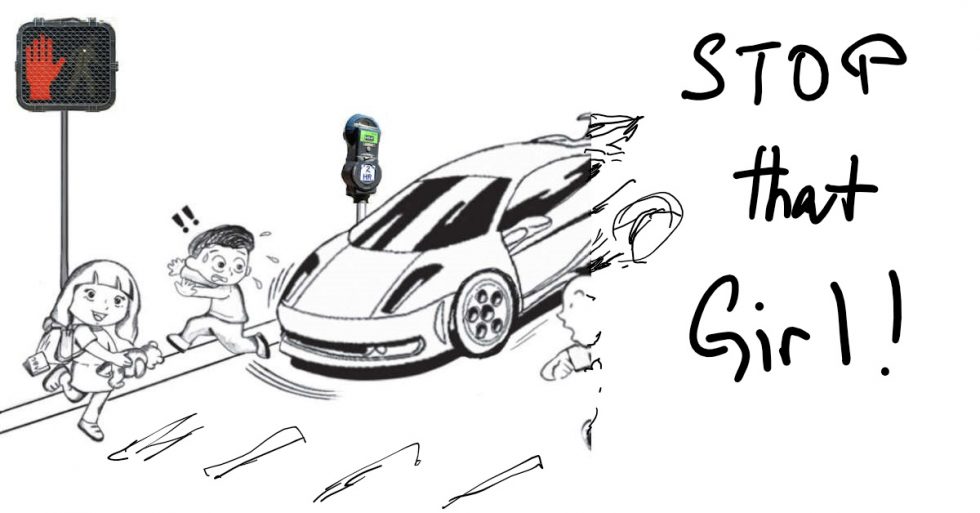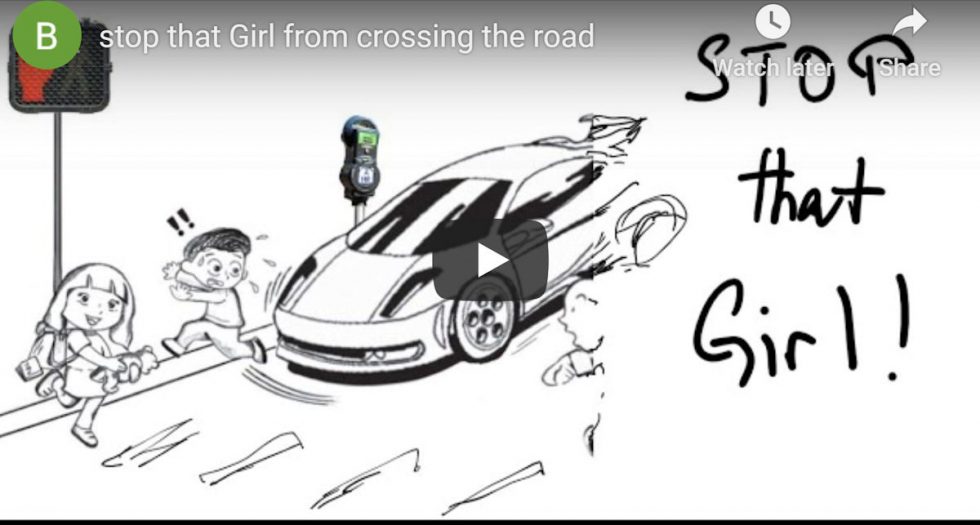I received feedback today that a rider today swung out their arm with a closed…
JACK’S BLOG – What is in the big picture?

Black beginnings
In high school, most of my classmates were black. It was a Catholic Marist Brothers high school and the brothers and most of the teachers were white. There were only 3 white boys in my class.
Fiji in those days were half native Fijians and the other half were Indians. We Chinese and other races were a small minority. And picked upon because of our differences. But, since the British were the governors, anyone with a bit of white skin were regarded as ‘superior’.
I was 17 years old before I woke to the limitations of my experience. I flew into Sydney and everyone was white! Even the guy picking up rubbish on the side of the road.
My next stop was Hong Kong. Everyone there was Chinese.
When I finally returned to Fiji after that first overseas trip, I had a much broader appreciation of race, culture and standard of living…
The Perception spectrum
The roads are getting busier. Riding on the road is ‘back to normal’. At 6.15am last Saturday morning, a ‘tradies’ ute brushed by my right side as I was on the kerbside lane of a (relatively empty) 3-lane road and the occupants had time to wind the window down and yell some offence at me.
I guess they thought I was a stupid lonely person who could not afford ‘Rego’… and was taking up his rightful space on the road.
I also drive a ‘tradies’ ute.
And I am scared for the food delivery bikers who brave the traffic with no regard for their own safety. I keep well away from them. I have a healthy respect for bike riders on the road because I know what it is like.
We live on a perception spectrum that begins with “No-Idea” and broaden out to “I see…”.
A lot of drivers out there are at the “No-Idea” level of the perception spectrum.
Why is the sky blue?
We cannot see light. We only know there is light because we see colours.
And a colour is not the full picture. Whilst light is a full spectrum of energy, both invisible and visible (as shown by a rainbow), a colour is just one type of light.
A red apple is not actually red. The apple skin has a pigment that sucks up most of the light that hits it. It just does not like the red light and rejects it. This is wavelength of light is reflected off the skin and we see red.
So in reality, a red apple contains every colour in the rainbow except red.
A similar thing happens when we look up to the sky on a sunny day. The atmospheric particles don’t like blue and bounces some of this colour off as the light passes through to an observer on earth.
What our eyes see is just a snippet of what is actually happening round us.
Jesus lived on a flat earth
“The Israelites also imagined the Earth to be a disc floating on water with an arched firmament above it that separated the Earth from the heavens” – Wiki
The stories I told when I was a young kid were simple and superficial. Now, I tell complicated stories.
Now, there is the internet.
Stories are used to bind humans to a pattern of behaviour and the biblical stories have lasted a few thousand years to become the mainstay of western civilisation. But it never ceases to amaze me that I was taught to take the bible literally – as if the stories were written today.
When I consider that the gospels were written when the world was flat, it gives me a better perspective of the value of the stories.
The nature of money
Have you ever wondered where your money comes from?
The ‘jobkeeper’ scheme means the reserve bank has to print $70bn. I have not received any freshly minted $100 notes yet – although I have had large sums of money deposited into my bank account by the ATO.
When I pull a $100 note out of my wallet, I think ‘real money’. But it is no more real than the marriage vow of ‘…till death do us part..”
Money started off as a trust in the future and a promise of stored value. If there is no tomorrow – then there is no use of money. Also, it is only as good as the promise. It used to be: “if you give me a token today and I can use it anytime in the future to get something of value in exchange… then it is money.”
In today’s world, it is: “Trust me. I look well off. I will just wave my piece of technology in front of you and you will receive money that you cannot touch and feel…”
That is what the reserve banks of the world are doing today. They don’t bother firing the mint up to print money. They just say to the government: “Just give me something called a bond that is a promise that you will pay me all this money back sometime in the future and I will make you as rich as you like…”.
The government then says to us: “Here is all this money. Go buy things. Trust us. The future is OK…”
And we go: “Hurray. I promise you got my vote!”
Why do we breathe?
I used to think that my urge to breathe was to get oxygen into my lungs. This meant that whenever I thought I needed more oxygen, I would force myself to breath more.
I remember my racing days (soon to return) when I would find the right wheel to follow and get prepared for the ‘kick’. The moment the acceleration started, my instincts took over.
I would take in a big breath first and then gulp down mouthfuls of air as soon as the power went down.
Little did I know that I did not need any extra oxygen until about 30 seconds into the effort. Now I know because it is what I have been comfortably doing the last few months.
If you hold your breath, It is not the need for oxygen that makes you want to breath. It is the higher levels of carbon dioxide in the blood. When you let go of your breath, there is still a lot of oxygen in it. This is because our ‘resting’ red blood cells are already between 95 and 99% oxygen saturation. They are not oxygen starved. So, most of the oxygen that goes in the lungs comes back out again.
While this may seem to be a ‘no-brainer’, what I did not realise was that it is not how much oxygen is clutched by the red blood cells – but how much of it can be released to the muscle cells that matters in efficient energy transfer.
A funny thing called the ‘Bohr Effect’ means that if the red blood cells carry too much oxygen, they don’t want to let go of it. It takes the presence of carbon dioxide to convince the blood cells to release the oxygen to the muscle cells.
So, the less you breathe, the more convinced the red blood cells are to let go of the oxygen to the muscles. It is the muscles that need the oxygen – not the blood cells.
Nature loves to play games with us.
Why the big picture?
“ In the end, everything will be Ok… and if it is not OK, it’s not the end.”. John Paul Dejoria
Concentrate on the small picture and we can convince ourselves that we know everything. And we all know people who are stuck on ‘right’ because they think they know everything.
I find it more fun to accept that I only know a fraction of what there is to know. Then, I don’t need to argue that I am right at all. I only need to concede that I probably haven’t seen the big picture yet.
The big picture always leads to a better story. See the video below and expand your perception.

